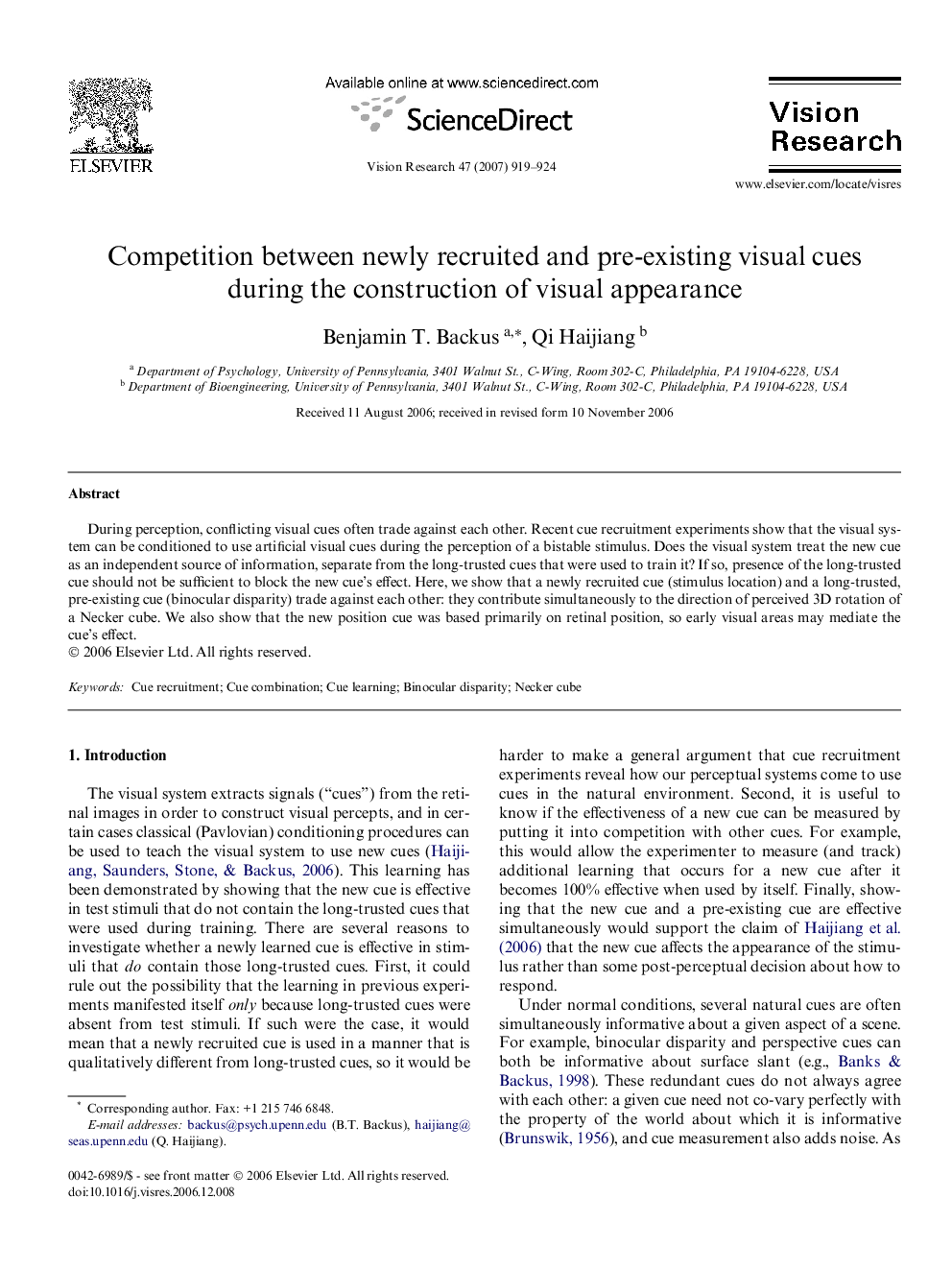| Article ID | Journal | Published Year | Pages | File Type |
|---|---|---|---|---|
| 4035756 | Vision Research | 2007 | 6 Pages |
During perception, conflicting visual cues often trade against each other. Recent cue recruitment experiments show that the visual system can be conditioned to use artificial visual cues during the perception of a bistable stimulus. Does the visual system treat the new cue as an independent source of information, separate from the long-trusted cues that were used to train it? If so, presence of the long-trusted cue should not be sufficient to block the new cue’s effect. Here, we show that a newly recruited cue (stimulus location) and a long-trusted, pre-existing cue (binocular disparity) trade against each other: they contribute simultaneously to the direction of perceived 3D rotation of a Necker cube. We also show that the new position cue was based primarily on retinal position, so early visual areas may mediate the cue’s effect.
